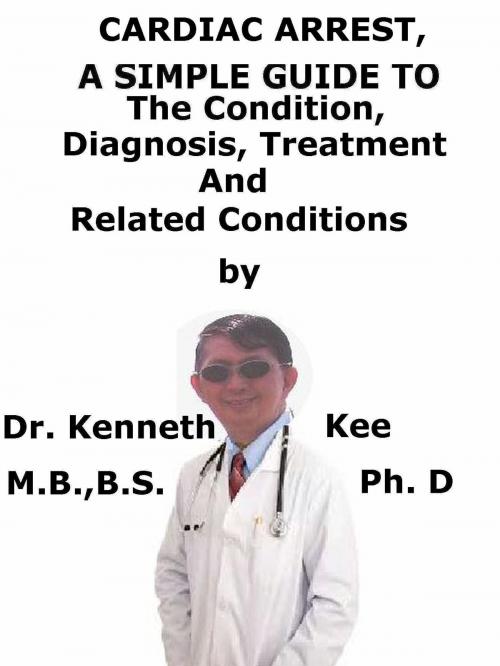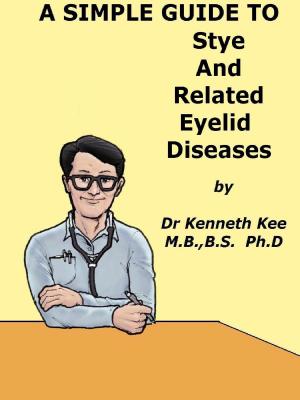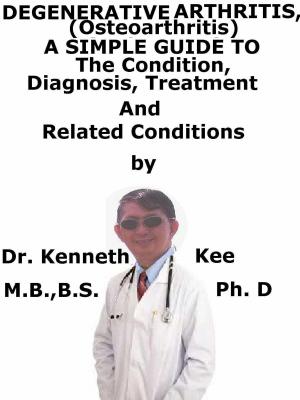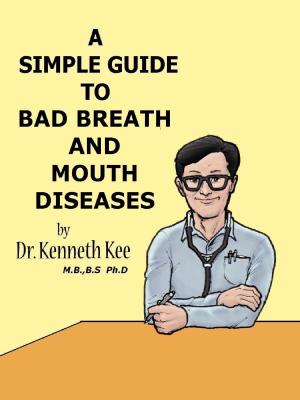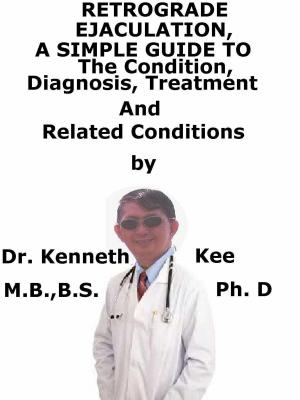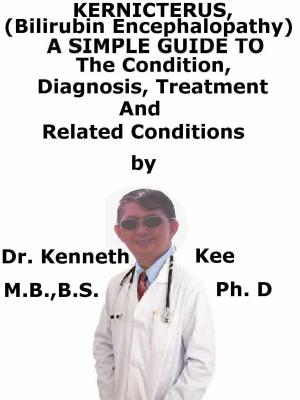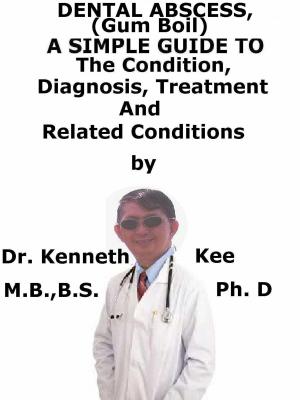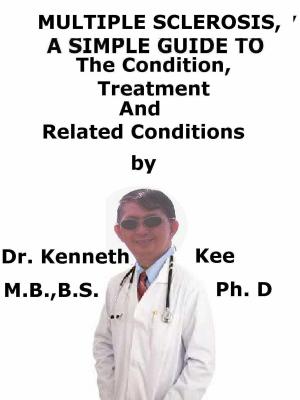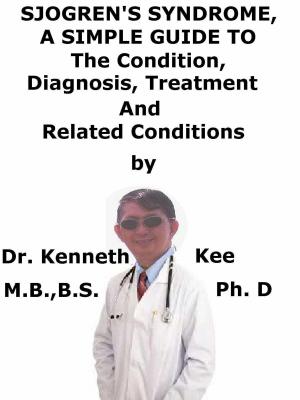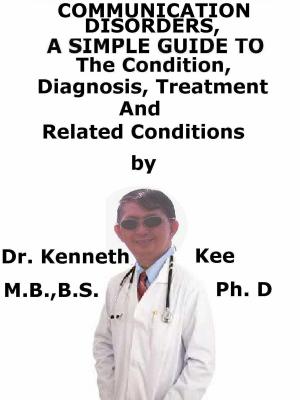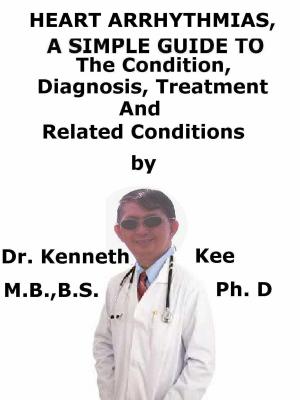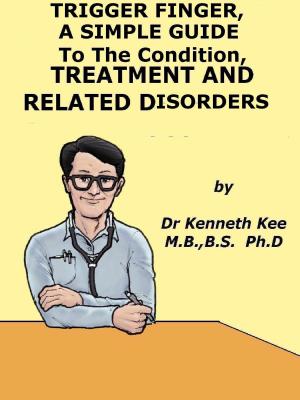Cardiac Arrest, A Simple Guide To The Condition, Diagnosis, Treatment And Related Conditions
Nonfiction, Health & Well Being, Medical, Specialties, Internal Medicine, Cardiology, Health, Ailments & Diseases, Heart| Author: | Kenneth Kee | ISBN: | 9781370182664 |
| Publisher: | Kenneth Kee | Publication: | April 6, 2018 |
| Imprint: | Smashwords Edition | Language: | English |
| Author: | Kenneth Kee |
| ISBN: | 9781370182664 |
| Publisher: | Kenneth Kee |
| Publication: | April 6, 2018 |
| Imprint: | Smashwords Edition |
| Language: | English |
This book describes Cardiac Arrest, Diagnosis and Treatment and Related Diseases
Cardiac arrest happens when the heart suddenly ceases beating.
When this happens, blood flow to the brain and the rest of the body also ceases.
Cardiac arrest is a medical emergency
If it is not treated within a few minutes, cardiac arrest most often causes death.
Causes
A heart attack is not a cardiac arrest; they are not similar.
A heart attack occurs when a blocked artery obstructs the flow of blood to the heart.
A heart attack can injure the heart, but it does not necessarily cause death.
Occasionally a heart attack can activate a cardiac arrest, however.
Cardiac arrest is caused by a problem with the heart's electrical system, such as:
1.Ventricular fibrillation (VF)
When VF occurs, the lower chambers in the heart fibrillate instead of beating regularly.
The heart cannot push out the blood, which leads to cardiac arrest.
2.Heart block
This happens when the electrical signal is slowed or stopped as it moves through the heart.
Disorders that may lead to cardiac arrest are:
1.Coronary heart disease (CHD)
2.Heart attack
3.Abnormal levels of potassium or magnesium
4.Severe physical stress
5.Recreational drugs
6.Medicines
Symptoms
1.Sudden loss of consciousness; a person will fall to the floor or slump down if sitting
2.No pulse
3.No breathing
Diagnosis
Cardiac arrest happens so fast that there is no point doing tests.
If a person survives, most tests are done afterwards:
1.Blood tests to check for enzymes that can show there is a heart attack.
2.The doctor may also use blood tests to check the levels of certain minerals, hormones, and chemicals.
3.Electrocardiogram (ECG) to measure the heart's electrical activity.
4. Echocardiogram to show if the heart has been damaged
5. Cardiac MRI helps the doctor see pictures of the heart and blood vessels
6. Nuclear ventriculography to check how well the heart is pumping blood
7. Intra-cardiac electrophysiology study (EPS) to monitor the heart's electrical signals is working.
8. EPS is used to check for abnormal heartbeats or heart rhythms.
9. Cardiac catheterization lets the doctor to see if the arteries are narrowed or blocked
10. Electrophysiologic study to evaluate the conduction system.
Treatment
Cardiac arrest needs emergency treatment right away to get the heart started again.
1.Cardiopulmonary resuscitation (CPR)
This is often the first form of treatment for cardiac arrest.
It can be done by anyone who has training in CPR.
2. Defibrillation.
This is the most important treatment for cardiac arrest.
It is done with a medical device (defibrillator) that gives an electrical shock to stimulate the heart to beat normally.
If the patient survives cardiac arrest, the patient will be admitted to a hospital
Depending on what caused the cardiac arrest, the patient may need other medicines, procedures, or surgery.
The patient may have an implantable cardioverter-defibrillator (ICD) placed under the skin near the chest
Bystander cardiopulmonary resuscitation (CPR)
The spectator use of automated external defibrillators raises neurologically intact survival to defibrillator discharge
Medicines used in cardiac arrest are:
1.Ventricular arrhythmia: Epinephrine or vasopressin; amiodarone and lidocaine
2.Pulse-less electrical activity (PEA): Epinephrine; atropine used in bradycardia
3.Asystole: vasopressin is better than epinephrine
Surgery
1.Temporary cardiac pacing
2.Radiofrequency ablation
3.Cardioverter defibrillator therapy
4.Coronary artery bypass grafting (CABG)
5.Excision of ventricular tachycardia foci
6.Excision of left ventricular anuerysm
7.Aortic valve replacement
8. Orthotopic heart transplant
TABLE OF CONTENT
Introduction
Chapter 1 Cardiac Arrest
Chapter 2 Causes
Chapter 3 Symptoms
Chapter 4 Diagnosis
Chapter 5 Treatment
Chapter 6 Prognosis
Chapter 7 Cardioversion
Chapter 8 Coronary Heart Disease
Epilogue
This book describes Cardiac Arrest, Diagnosis and Treatment and Related Diseases
Cardiac arrest happens when the heart suddenly ceases beating.
When this happens, blood flow to the brain and the rest of the body also ceases.
Cardiac arrest is a medical emergency
If it is not treated within a few minutes, cardiac arrest most often causes death.
Causes
A heart attack is not a cardiac arrest; they are not similar.
A heart attack occurs when a blocked artery obstructs the flow of blood to the heart.
A heart attack can injure the heart, but it does not necessarily cause death.
Occasionally a heart attack can activate a cardiac arrest, however.
Cardiac arrest is caused by a problem with the heart's electrical system, such as:
1.Ventricular fibrillation (VF)
When VF occurs, the lower chambers in the heart fibrillate instead of beating regularly.
The heart cannot push out the blood, which leads to cardiac arrest.
2.Heart block
This happens when the electrical signal is slowed or stopped as it moves through the heart.
Disorders that may lead to cardiac arrest are:
1.Coronary heart disease (CHD)
2.Heart attack
3.Abnormal levels of potassium or magnesium
4.Severe physical stress
5.Recreational drugs
6.Medicines
Symptoms
1.Sudden loss of consciousness; a person will fall to the floor or slump down if sitting
2.No pulse
3.No breathing
Diagnosis
Cardiac arrest happens so fast that there is no point doing tests.
If a person survives, most tests are done afterwards:
1.Blood tests to check for enzymes that can show there is a heart attack.
2.The doctor may also use blood tests to check the levels of certain minerals, hormones, and chemicals.
3.Electrocardiogram (ECG) to measure the heart's electrical activity.
4. Echocardiogram to show if the heart has been damaged
5. Cardiac MRI helps the doctor see pictures of the heart and blood vessels
6. Nuclear ventriculography to check how well the heart is pumping blood
7. Intra-cardiac electrophysiology study (EPS) to monitor the heart's electrical signals is working.
8. EPS is used to check for abnormal heartbeats or heart rhythms.
9. Cardiac catheterization lets the doctor to see if the arteries are narrowed or blocked
10. Electrophysiologic study to evaluate the conduction system.
Treatment
Cardiac arrest needs emergency treatment right away to get the heart started again.
1.Cardiopulmonary resuscitation (CPR)
This is often the first form of treatment for cardiac arrest.
It can be done by anyone who has training in CPR.
2. Defibrillation.
This is the most important treatment for cardiac arrest.
It is done with a medical device (defibrillator) that gives an electrical shock to stimulate the heart to beat normally.
If the patient survives cardiac arrest, the patient will be admitted to a hospital
Depending on what caused the cardiac arrest, the patient may need other medicines, procedures, or surgery.
The patient may have an implantable cardioverter-defibrillator (ICD) placed under the skin near the chest
Bystander cardiopulmonary resuscitation (CPR)
The spectator use of automated external defibrillators raises neurologically intact survival to defibrillator discharge
Medicines used in cardiac arrest are:
1.Ventricular arrhythmia: Epinephrine or vasopressin; amiodarone and lidocaine
2.Pulse-less electrical activity (PEA): Epinephrine; atropine used in bradycardia
3.Asystole: vasopressin is better than epinephrine
Surgery
1.Temporary cardiac pacing
2.Radiofrequency ablation
3.Cardioverter defibrillator therapy
4.Coronary artery bypass grafting (CABG)
5.Excision of ventricular tachycardia foci
6.Excision of left ventricular anuerysm
7.Aortic valve replacement
8. Orthotopic heart transplant
TABLE OF CONTENT
Introduction
Chapter 1 Cardiac Arrest
Chapter 2 Causes
Chapter 3 Symptoms
Chapter 4 Diagnosis
Chapter 5 Treatment
Chapter 6 Prognosis
Chapter 7 Cardioversion
Chapter 8 Coronary Heart Disease
Epilogue
